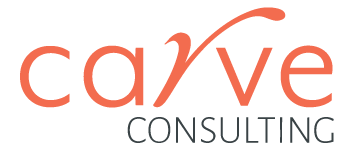Before getting into the detail of online profiles and search engines, always remember, the majority of open job opportunities are still filled through networks. This is because ultimately the actual hiring decision is a human one.
As there is a continuing candidate shortage in some fields, a greater number of roles will be pushed into the public domain and internal and external recruiters will be searching online for potential candidates. If you can’t be found online, then you simply won’t be in the mix.
Before LinkedIn, recruiters used to do ‘deep Google’ searches to find potential candidates from industries, specific companies, conference lists, matching to keyword searches. Today doing the deep searching for recruiters are candidate search engines or ‘people intelligence platforms’ (as Findem describes itself), LinkedIn (of course), and every job board that you’ve uploaded your resume or saved a search criteria.
If your online profile and content is not tailored to the role and industry you are looking for, chances are you’re missing out on opportunities, or being spammed with irrelevant opportunities.
So there’s a few simple things you can do to improve your chances of being found.
Job Boards
If you have set up a search profile on a job board, review the criteria to make sure it is up-to-date and relevant to what you’re now looking for. Likewise, if you’ve uploaded your resume to a job board (for example Seek or Jora) ensure it is tailored to the role you are looking for. Use job titles and phrases that would be found on a company’s job description and make sure it is in ATS readable format.
Love it or hate it, LinkedIn is here to stay! It is your most important online presence, so how you present yourself on LinkedIn is critical. Apart from it being the leading recruitment tool, if someone was to search for your name it is possible that the first search result will be your LinkedIn profile.
When people are active on LinkedIn, there are typically three main reasons: to find a new role, increase their personal brand or selling a product or service. If you haven’t been a high user of LinkedIn in the past, you can activate your profile quickly.
- First step is to ensure you have a LinkedIn profile that is optimised for your job search.
- The second aspect is knowing how to grow your network. LinkedIn works like a multiplier effect. The more 1st degree connections you have, the more searches you’ll appear in.
- Increase your activity on LinkedIn. LinkedIn, like any social media platform, will reward you for actively engaging on the platform and increase your profile’s reach. This engagement may include posting, sharing and commenting on content, connecting with new contacts and engaging in group forums.
- Be aware, the free version of LinkedIn only offers limited features, so if you are actively searching for a new job consider upgrading to Premium.
Online profiles and bios
If you have done freelance or subcontractor roles, your profile or bio may be included on a directory or employer website, or you may have your own website. Make sure it’s up to date and portrays your current experience. If it’s no longer relevant then, consider having the profile removed.
If you have your own website, here’s a few tips to make it easier to be found online.
- Have your own domain name (ideally it’s your name).
- Make sure that the online resume can be indexed by search engines (don’t just have it as a PDF document).
- Give the option to download your resume in PDF form so the recruiter or hiring manager can access it directly.
- Keep the look and feel of your resume and LinkedIn consistent with your personal site. Use similar fonts, colours, and images, etc.
Lastly, a word of caution. As we live more of our lives online, be aware of how your profile and content sharing across all social media platforms may inadvertently impact your job search chances.

